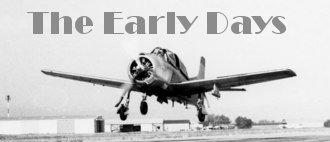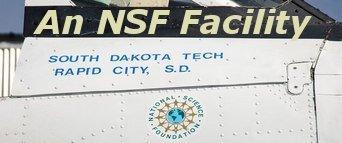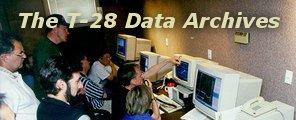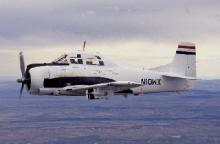T-28 Aircraft Data Archive
The T-28 Instrumented Research Aircraft Data Archive
The South Dakota School of Mines and Technology (SDSMT) armored T-28 aircraft was developed as a result of a successful proposal submitted in 1967 to the National Science Foundation by R. A. Schleusener and P. B. MacCready to develop an aircraft for in situ observations in hailstorms. The scientific motivation was to better understand the microphysical and dynamical processes governing the development and growth of hail in thunderstorms. Research flights began in 1970, and the aircraft became fully operational in support of the National Hail Research Experiment (NHRE) in northeastern Colorado in 1972.
In 1987 the SDSMT entered into a cooperative agreement with the National Science Foundation (NSF) to operate the armored T-28 as a national airborne research facility. This agreement and successor agreements ran through 2003. During the 17 summer convective seasons within this period, the aircraft supported 18 projects concerned with development of rain and hail, atmospheric electricity, remote detection of convective turbulence, transport and dispersion of cloud seeding material within storms, effects of cloud seeding on storm microphysical evolution, and verification of polarimetric radar hydrometeor signatures.
Data acquired during field projects prior to 1989 is no longer archived in machine-readable format. Data from 1989-2003 currently still is archived on media readable with current computer technology. Starting in 2005 SDSMT and NCAR/EOL received funding from NSF to organize the data from 1989-2003 in a readily-accessible archival format (netCDF) with supporting browsing and analysis software accompanied by extensive help utilities and background information. The development of this web page and the data archive is the outcome of this process.
More details of the T-28 history are available here.
Data Manager
- EOL Archive, NCAR/EOL/DMS



